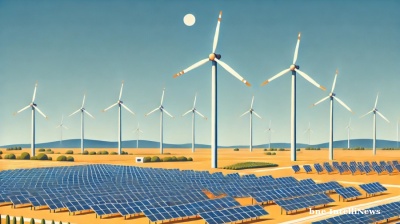China is consolidating its dominance in the global industrial robotics market, accounting for 41% of the world’s operational robot stock and more than half of all new installations in 2024, according to new data from the International Federation of Robotics (IFR).
The country added 295,000 industrial robots in 2024 alone — more than the rest of the world combined — bringing its total operational stock to two million units, or more than four-times the number installed in Japan, the world’s second-largest market.
China’s relentless automation drive reflects a combination of structural demand and strategic policy. Faced with rising labour costs, demographic decline and ambitions to upgrade its manufacturing base, Beijing has turned industrial robotics into a national priority. “No other country is installing robots at the scale or speed of China,” the IFR noted in its World Robotics 2025 report.
According to Capital Economics, China now deploys more industrial robots annually than the next five countries combined — including Japan, the United States, South Korea and Germany. While these advanced economies remain important centres of robotic innovation and development, China has emerged as the global epicentre for deployment and operational scale.
In 2022, China installed 290,300 units, compared to 50,400 in Japan and 39,600 in the US. Its lead has only widened since. The country has now led the world in annual installations for more than a decade, but the stock gap is now becoming entrenched, with installed robots per country diverging sharply.
Policy-driven expansion China’s automation push is not solely market-driven. The government has poured investment into domestic robot manufacturers and tied robotics to industrial policies like “Made in China 2025” and the broader goal of reducing reliance on foreign core technologies.
While early waves of industrial robots in China were largely imported, particularly from Japanese and German firms, the past five years have seen rapid expansion of Chinese firms in both manufacturing and systems integration. According to IFR data, local manufacturers now account for a growing share of installations, particularly in sectors such as electronics, automotive, and metals.
Implications for global competitiveness China’s scale in robotics is transforming its position in global value chains. “The focus in Western discourse often remains on who makes the robots,” one industry analyst noted, “but increasingly the more relevant question is who uses them — and how effectively.” On this metric, China is outpacing its rivals.
This shift has prompted concern in Western capitals, where industrial policy is again at the forefront. The US and EU have announced subsidies and funding for advanced manufacturing and supply chain security, but there is growing acknowledgement that deployment substantial lags behind China’s robot roll out.
From imitation to scale
While critics have long accused Beijing of relying on subsidies, forced tech transfer, or acquisition to develop its robotics sector, the current scale of deployment is difficult to dismiss.
“Industrial policy is not unique to China,” a European robotics executive told IFR, “but its ability to scale and iterate across sectors has no peer.”
Data from the IFR shows China’s robot deployment continues to grow even in a period of global economic uncertainty. Western economies remain technologically competitive in high-end robot design, software, and integration — but the centre of gravity in factory automation has shifted decisively East.
As the world moves further into the era of smart manufacturing, the question is no longer whether China will dominate industrial robotics, but how the rest of the world will respond.
Tech

The Iranian inventor that invented the floating shoes, has now built a propeller-less propulsion system ideal for flying taxis
Mohsen Bahmani is an Iranian-born mechanical engineer and a man with a dream. When he was just 17 years old, he made a pair of floating shoes that allow you to walk on water. Now he has built a propulsion system ideal for flying taxis.
_(1).jpg)
OpenAI to invest up to $25bn in Argentina under Milei incentive scheme
Artificial intelligence giant OpenAI and energy company Sur Energy have signed a letter of intent to develop a data centre hub in Argentina requiring investment of up to $25bn.

Helium was China's rare earth metals Achilles' heel
China has a devastating tool in its escalating trade war with the US: rare earth metals (REMs). Last week, Beijing announced new restrictive export controls on the export of anything with even a smidgen of Chinese-produced REMs.

Takeoff not far away for Turkey’s first flying car AirCar
It will set you back $99,000 and you'll also need a pilot's licence.



